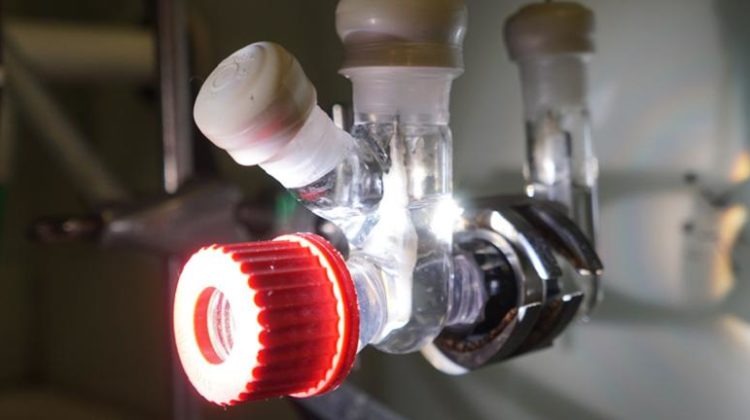
Researchers from the University of Cambridge have developed a solar-powered system that can transform plastic waste and greenhouse gases into sustainable fuels and other valuable products – the first such system to be capable of converting two waste streams into two chemical products at the same time.
The reactor converts carbon dioxide and plastic into different products that are useful in a range of industries. In tests, CO2 was converted into syngas, a key building block for sustainable liquid fuels, and plastic bottles were converted into glycolic acid, which is widely used in the cosmetics industry. The system can easily be tuned to produce different products by changing the type of catalyst used in the reactor.
Converting plastic and greenhouse gases into useful and valuable products using solar energy is an important step in the transition to a more sustainable, circular economy. ‘Converting waste into something useful using solar energy is a major goal of our research,’ said Professor Erwin Reisner from the Yusuf Hamied Department of Chemistry, who also leadsthe Cambridge Circular Plastics Centre. ‘Plastic pollution is a huge problem worldwide and often many of the plastics we throw into recycling bins are incinerated or end up in landfill.’
Other solar-powered ‘recycling’ technologies hold promise for addressing plastic pollution and for reducing the amount of greenhouse gases in the atmosphere but, to date, they haven’t been combined in a single process.
‘A solar-driven technology that could help to address plastic pollution and greenhouse gases at the same time could be a game-changer in the development of a circular economy,’ said doctoral researcher Subhajit Bhattacharjee.
‘We also need something that’s tuneable, so that you can easily make changes depending on the final product you want,’ said Motiar Rahaman, Marie Curie Fellow in Reisner’s lab.
The integrated reactor has two separate compartments – one for plastic and one for greenhouse gases – and uses a light absorber based on perovskite, a promising alternative to silicon for next-generation solar cells.The team designed different catalysts, which were integrated into the light absorber. By changing the catalyst, the researchers could then change the end product.
Tests of the reactor under normal temperature and pressure conditions showed that it could efficiently convert PET plastic bottles and CO2 into different carbon-based fuels such as carbon monoxide, syngas or formate, in addition to glycolic acid. The reactor produced these products at a rate that is also much higher than conventional photocatalytic CO2 reduction processes.
‘Generally, CO2 conversion requires a lot of energy, but with our system, basically you just shine a light at it and it starts converting harmful products into something useful and sustainable,’ said Rahaman. ‘Prior to this system, we didn’t have anything that could make high-value products selectively and efficiently.’
‘What’s so special about this system is the versatility and tuneability – we’re making fairly simple carbon-based molecules right now, but in future, we could be able to tune the system to make far more complex products, just by changing the catalyst,’ said Bhattacharjee.
Reisner recently received new funding from the European Research Council for further development of the solar-powered reactor. The team hopes to be able to use the reactor to produce more complex molecules within the next five years and suggests that similar techniques could someday be used to develop an entirely solar-powered recycling plant.
‘Developing a circular economy, where we make useful things from waste instead of throwing it into landfill, is vital if we’re going to meaningfully address the climate crisis and protect the natural world,’ said Reisner. ‘And powering these solutions using the Sun means that we’re doing it cleanly and sustainably.’
The research has been published in Nature Synthesis.


